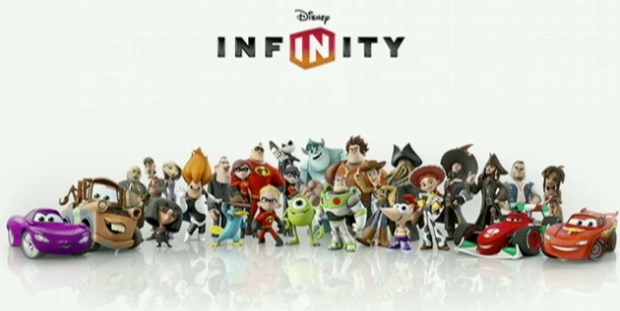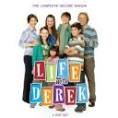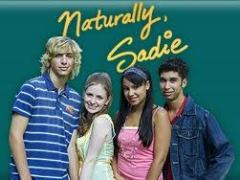
History
Ubisoft Montreal was founded in 1997 as a subsidiary of a French video game developer. The city of Montreal suited the makeup of Ubisoft as a company; as it embodied a French background (Ubisoft actually started up in France), and it was convenient in establishing a  place close to the North American video game market (Kumar, 2006). Ubisoft saw the opportunity to grow in Montreal despite the fact that the Québec government was initially hesitant in welcoming the company. Later on, the province’s government was convinced to accept Ubisoft as a video game developer in Montreal, thanks to Québec lobbyist Sylvain Vaugeois’ assertiveness in telling Ubisoft that Québec was open to a deal; thus generating media attention that forced the Parti Québecois to go through with providing a Canadian home for the video game developer. Soon after, the Quebec government saw the potential for economic growth stemming from the video gaming industry. During this time, Québec “was [regarded as] an accommodating province that in the 1990s bet on multimedia as a path to post-industrial prosperity” (de Peuter, 2012).
place close to the North American video game market (Kumar, 2006). Ubisoft saw the opportunity to grow in Montreal despite the fact that the Québec government was initially hesitant in welcoming the company. Later on, the province’s government was convinced to accept Ubisoft as a video game developer in Montreal, thanks to Québec lobbyist Sylvain Vaugeois’ assertiveness in telling Ubisoft that Québec was open to a deal; thus generating media attention that forced the Parti Québecois to go through with providing a Canadian home for the video game developer. Soon after, the Quebec government saw the potential for economic growth stemming from the video gaming industry. During this time, Québec “was [regarded as] an accommodating province that in the 1990s bet on multimedia as a path to post-industrial prosperity” (de Peuter, 2012).
Since the company’s inception of Canadian soil, Ubisoft Montreal’s studio has been located in the Mile End district of Montreal.  Back in 1997, this area was not among the city’s bright spots when it came to aesthetics—in fact, “not long ago, buildings were crumbling, the streets looked shoddy and businesses stayed away” (Nowak, 2010). Things have gradually changed since Ubisoft Montreal has made a noticeably aged four floor textile building its home. This run-down area of Montreal has grown into a sight of nice shops and condos, thanks to Ubisoft’s employment of artists, designers and engineers. What was a place considered by many as a “wasteland” has transformed to a place that houses some of the city’s (better yet, country’s) creative minds with a knack for developing video games.
Back in 1997, this area was not among the city’s bright spots when it came to aesthetics—in fact, “not long ago, buildings were crumbling, the streets looked shoddy and businesses stayed away” (Nowak, 2010). Things have gradually changed since Ubisoft Montreal has made a noticeably aged four floor textile building its home. This run-down area of Montreal has grown into a sight of nice shops and condos, thanks to Ubisoft’s employment of artists, designers and engineers. What was a place considered by many as a “wasteland” has transformed to a place that houses some of the city’s (better yet, country’s) creative minds with a knack for developing video games.
 The establishing of Ubisoft Montreal helped both the video game developer and the province of Québec by creating new jobs and opening up university/college programs that directly contributed to the growth of the video game industry. At first, Ubisoft Montreal made games for young children such as “Tonic Trouble” and “Donald Duck: Goin’ Quackers”, but later began creating video games that catered to the older youth demographic—in 2000, the company began developing Tom Clancy’s Splinter Cell (which was released in 2002). Since the release of this game over a decade ago, Ubisoft Montreal has had a hand in the development of a variety of notable video games that have been directed at the older youth such as the Assassin’s Creed (2007, 2009-2013), Prince of Persia (2005, 2008, 2010), and Far Cry (2006, 2008, 2012) franchises, respectively.
The establishing of Ubisoft Montreal helped both the video game developer and the province of Québec by creating new jobs and opening up university/college programs that directly contributed to the growth of the video game industry. At first, Ubisoft Montreal made games for young children such as “Tonic Trouble” and “Donald Duck: Goin’ Quackers”, but later began creating video games that catered to the older youth demographic—in 2000, the company began developing Tom Clancy’s Splinter Cell (which was released in 2002). Since the release of this game over a decade ago, Ubisoft Montreal has had a hand in the development of a variety of notable video games that have been directed at the older youth such as the Assassin’s Creed (2007, 2009-2013), Prince of Persia (2005, 2008, 2010), and Far Cry (2006, 2008, 2012) franchises, respectively.
What Makes It “Canadian”?
With the video game industry on the rise, Ubisoft decided to go on a limb and expand its workforce. Ubisoft Montreal opened its doors in 1997 with the hopes of creating a new eco-system with its fellow Quebecers. The idea was to introduce Ubisoft Montreal game studios to the local community and create more jobs in the economy. In turn, the studio would produce revolutionizing titles such as the critically acclaimed “Splinter Cell” stealth action games.

So how is this all relevant to being Canadian? Well, putting all the poutine aside, Ubisoft Montreal not only created some of the most well known games around the world but also moulded the gaming industry to what it is today. Their new and revolutionizing work with motion capture and online play created a new demand for games worldwide. This meant that employees had to be trained in these new ways of creating games. So what do they do? They create programs at the local colleges and universities in order to train their future workforce. Students would then be hired right after getting their degrees and put to work. Not only does this create a symbiosis with the community itself, it creates an interesting dynamic between the studio and the world. The gaming industry is constantly evolving, changing into bigger and better things with the technology that is available to it. Therefore, new and fresh ideas are needed to stay on track and ahead of the curve. What better what to do that than with fresh, young minds that are filled with ideas and ready to earn some extra money!
 Ubisoft Montreal also does charity work, who would have thought?! Make-A-Wish Québec was selected by the Montreal Canadians goaltender, Carey Price and Ubisoft as a proud beneficiary of their charity venture. Last month, the three-time Stanley Cup winner and the renowned interactive entertainment company partnered up and announced that an Assassin’s Creed III-themed hockey mask signed by Price will be auctioned off. The money raised will be donated to Make-A-Wish Quebec and the Foundation invites everyone to place their bid before December 16, 2012.
Ubisoft Montreal also does charity work, who would have thought?! Make-A-Wish Québec was selected by the Montreal Canadians goaltender, Carey Price and Ubisoft as a proud beneficiary of their charity venture. Last month, the three-time Stanley Cup winner and the renowned interactive entertainment company partnered up and announced that an Assassin’s Creed III-themed hockey mask signed by Price will be auctioned off. The money raised will be donated to Make-A-Wish Quebec and the Foundation invites everyone to place their bid before December 16, 2012.
“It is not every day that such an opportunity presents itself and we feel very honored that Carey Price and Ubisoft chose our Foundation,” said Michelle Sylvestre, CEO of Make-A-Wish Quebec. “This initiative will allow us to grant more wishes to kids with life-threatening medical conditions, bringing them hope, strength and joy.” (2012)
Ubisoft Montreal continues to support its Canadian employees by continuing to expand its operations. It will create about 500 new jobs in Montreal over the next seven years. Ubisoft Montreal and Toronto CEO Yannis Mallat announced the $373-million investment this morning at the company’s Montreal headquarters, alongside several Parti Québécois cabinet ministers. Mallat said the company — which has five locations in Montreal — is looking to hire locally, with the majority of jobs going to Québecers. The company currently has 2,650 staff members in Montreal and it expects to employ 3,500 people in its Québec studios by 2020. “We’re happy to have been able to make this project here in Montreal. It could have been elsewhere, but the jobs are here,” Mallat said. He said Ubisoft considered expanding in other cities, but chose Montreal primarily because of a financial boost from the provincial government. Premier Pauline Marois announced a $9.9-million investment in the Ubisoft expansion, and said the company will be offered tax incentives. (CBC, 2013)
announced the $373-million investment this morning at the company’s Montreal headquarters, alongside several Parti Québécois cabinet ministers. Mallat said the company — which has five locations in Montreal — is looking to hire locally, with the majority of jobs going to Québecers. The company currently has 2,650 staff members in Montreal and it expects to employ 3,500 people in its Québec studios by 2020. “We’re happy to have been able to make this project here in Montreal. It could have been elsewhere, but the jobs are here,” Mallat said. He said Ubisoft considered expanding in other cities, but chose Montreal primarily because of a financial boost from the provincial government. Premier Pauline Marois announced a $9.9-million investment in the Ubisoft expansion, and said the company will be offered tax incentives. (CBC, 2013)
Taking chances, making changes and creating a thriving economy is all what Ubisoft Montreal had in mind when they first began work in ’97. They have solidified their identity as a Canadian gaming company not only to their local population and across Canada, but to the world. Their continuous growth and innovative techniques keep pushing the limits of what the gaming industry can do. “The imminent arrival of the next generation of consoles, the expansion of mobile platforms, the multiplication of connected, immersive, and social environments, and the strategic importance of the relationship between developers and players are profoundly transforming the video game industry,” said Ubisoft CEO Yves Guillemot. “Today’s announcement allows us to anticipate the growth of our future needs with the main objective of strengthening proximity with our players and creating value for them.” Ubisoft plans to use these new resources to focus on mobile and online development, but the company is planning to expand its motion capture technologies as well. So, if you’re a young, talented developer, you may want to cultivate a taste for poutine. (Engen, 2013)
How Does This Relate to the Youth?
Video games are a form of children’s media because the youth make up the biggest demographic for these interactive electronics. As noted earlier, Ubisoft Montreal originally started making games for younger children such as “Tonic Trouble” and “Donald Duck: Goin’ Quackers”, but later began creating video games that better suited older youth, such as “Splinter Cell”, “Assassin’s Creed”, and “Prince of Persia: The Sands of Time”. There was a definite demographic switch within the company as it moved from producing games for 8-12 year olds to games geared for 14-17 year olds. These titles were mostly played by boys considering the content of the actual game, but some females played as well.  This draws back to an argument pointed out by Seiter (1993) that girls would consume boy media products but not vice versa. Ubisoft Montreal has succeeded in covering all bases though, as they have released games that one could identify as “family oriented”, like “Michael Jackson: The Experience” for example, where players would have to imitate the dance moves of the well-known music icon.
This draws back to an argument pointed out by Seiter (1993) that girls would consume boy media products but not vice versa. Ubisoft Montreal has succeeded in covering all bases though, as they have released games that one could identify as “family oriented”, like “Michael Jackson: The Experience” for example, where players would have to imitate the dance moves of the well-known music icon.
Another interesting topic with Ubisoft Montreal is the fact that most of their popular titles were rated “M” for mature by the Entertainment Software Rating Board (ESRB). Therefore, in order to buy “Splinter Cell” and “Assassin’s Creed” in Canada, the person must be 17 or older. However, this leads to a problem within the rating system because in most cases it is not the youth buying these games, it is their parents. Some of these parents are oblivious to the content they are exposing their child to through these video games. According to the ESRB website, those specific games listed above include violence, blood, strong language, and in some cases sexual themes.  The infamous nag factor from the children entices these parents to cave in and buy their children these video games that are not suitable for the youth’s age. Children take advantage of their consumer power and put this burden on parents by acting in an unreasonable manner until they get what they want. This is one of the main problems with the children and the video game industry as children are being exposed to content that is too mature for them, and this is being done by their parents buying the mature-rated video games for them.
The infamous nag factor from the children entices these parents to cave in and buy their children these video games that are not suitable for the youth’s age. Children take advantage of their consumer power and put this burden on parents by acting in an unreasonable manner until they get what they want. This is one of the main problems with the children and the video game industry as children are being exposed to content that is too mature for them, and this is being done by their parents buying the mature-rated video games for them.

On the ESRB website, there is page dedicated to education in relation to parents purchasing video games for their children as the ESRB wants to “fulfill its mission in helping parents choose age appropriate video games for their children and families” (ESRB, 2013). Parents should use tools like the ESRB to be educated on media literacy and video game ratings in order to understand the content in which they are allowing their children to interact with.
References
CBC News. (2013, September 30). Ubisoft Montreal invests $373M, creates 500 jobs [Supplemental material]. CBC. Retrieved from http://www.cbc.ca/news
Coulter, Natalie . (2013). From the Top Drawer to the Bottom Line: The Commodification of Children’s Culture. Mediascapes. 4th edition. Leslie Regan Shade, (ed). Nelson Education: Toronto.
De Peuter, G. (2012). Level Up: Video Game Production in Canada. In Cultural Industries.ca: Making Sense of Canadian Media in the Digital Age, ed. Ira Wagman and Peter Urquhart. Toronto: Lorimer. Pp. 78-94.
Engen, J. (2013, September 30). Ubisoft expands Canadian studio. The Escapist. http://www.escapistmagazine.com/
Kumar, M. (2006, December 14). The French-Canadian Connection: A Q&A With Yannis Mallat, Ubisoft Montreal. Gamasutra. Retrieved from http://www.gamasutra.com/
Nowak, P. (2010, September 13). Respawned: How video games revitalize cities [Supplemental material]. CBC. Retrieved from http://www.cbc.ca/news
Seiter, E. (1993). Sold separately: Children and parents in consumer culture. New Brunswick, N.J.: Rutgers University Press.



















